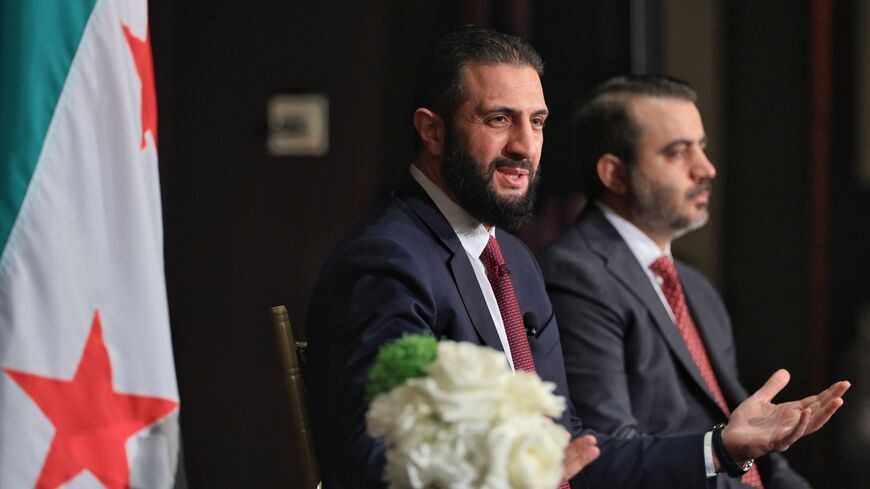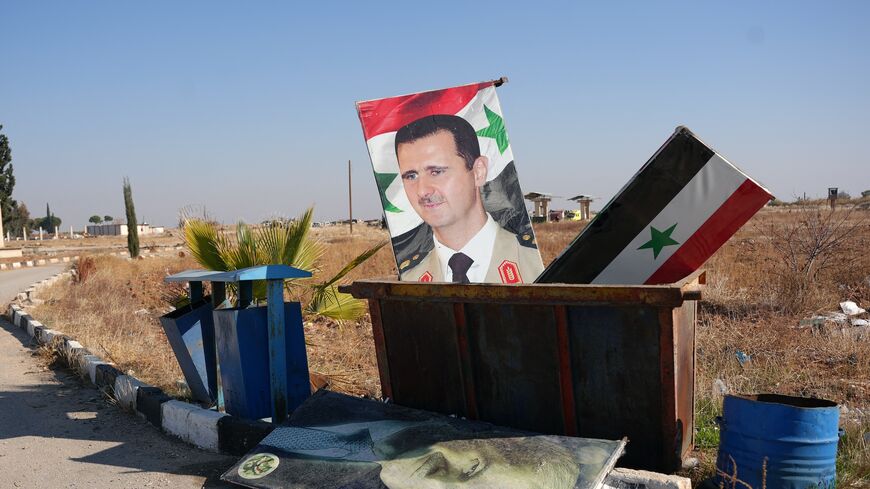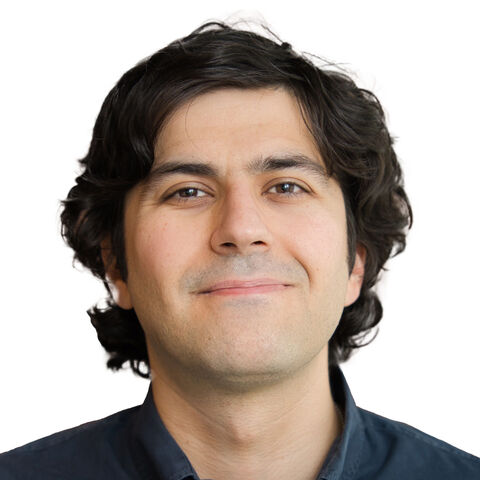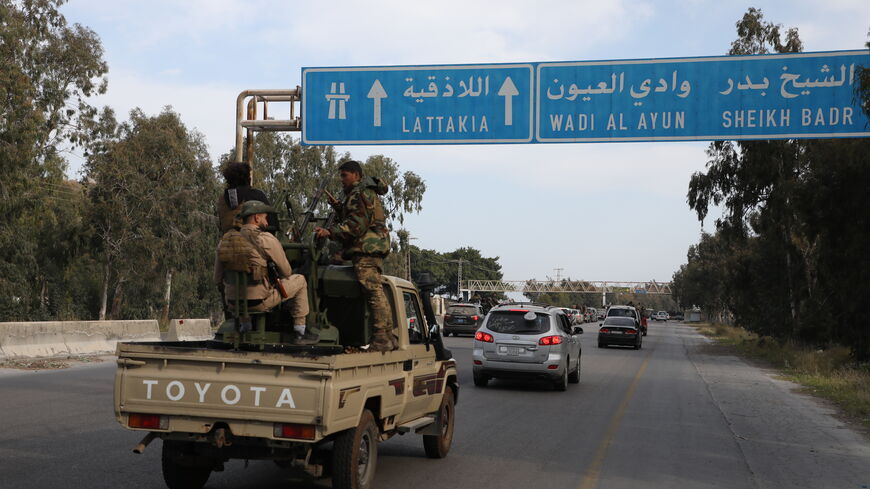Syria unveils gold eagle emblem: What it means
The new national emblem is another step in the removal of symbols from the Assad dynasty, which ruled the country for more than five decades.
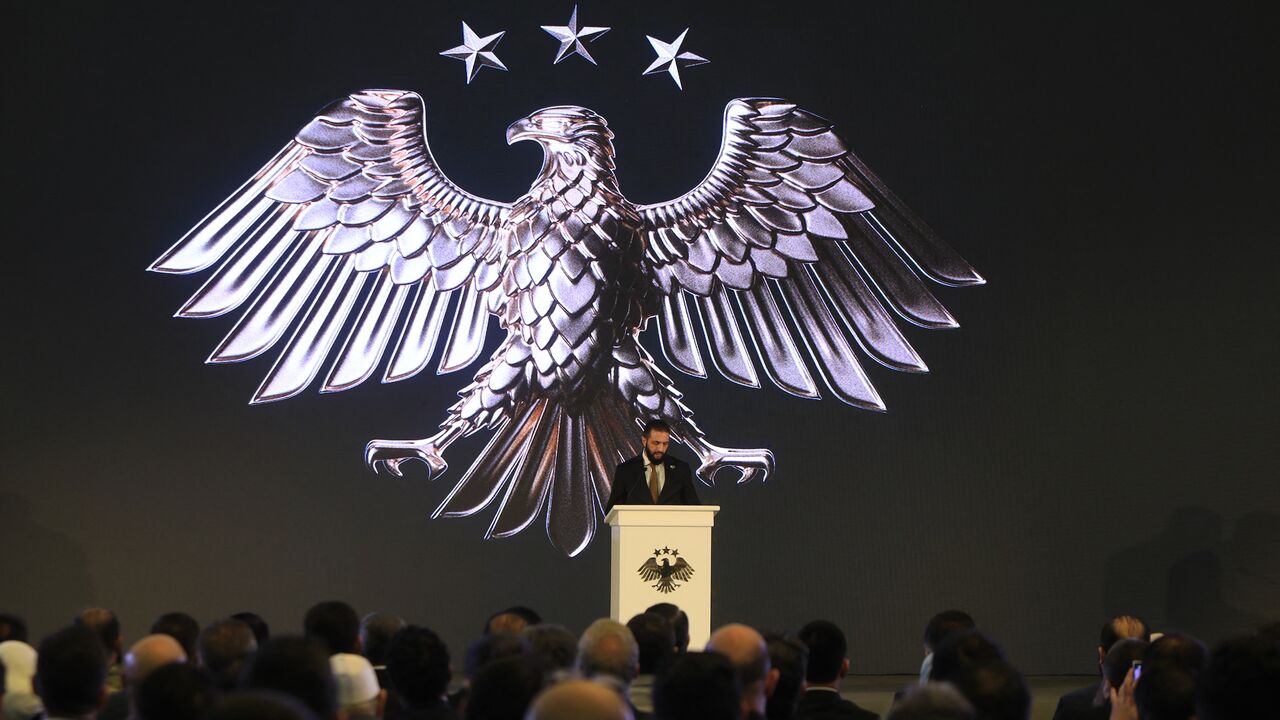
The Syrian presidency on Thursday introduced the new symbols of the Syrian Arab Republic, including changes to the national emblem, replacing those of the toppled Assad dynasty, which ruled the country for more than five decades until late last year.
What happened: The unveiling took place during a ceremony at the Presidential Palace in Damascus with President Ahmed al-Sharaa and top officials, including Foreign Minister Assaad al-Shibani, in attendance.
According to the official Syrian Arab News Agency (SANA), the event featured visual and artistic performances — including a massive drone show and holograms depicting the new national emblem and other Syrian symbols and historical landmarks, among them the Aleppo Citadel and Old City of Damascus — and concluded with a fireworks show.
Syria launches new visual identity with spectacular drone show. pic.twitter.com/y1EW3slXGN
— Roya News English (@RoyaNewsEnglish) July 4, 2025
Celebrations were held in tandem across the nation.
In a speech during the launch ceremony, Sharaa said the country's new identity reflects a “Syria that does not accept division or partition, a unified Syria, and that cultural and ethnic diversity is a factor of enrichment, not division or conflict.”
He added, “Today’s celebration embodies the identity of Syria and its people in this new historical period, an identity that derives its characteristics from this bird of prey [gold eagle], from which it derives strength, determination, speed, mastery, and innovation in performance.”
The Syrian leader went on to say, “We declare a break with the regime of oppression and tyranny, and the beginning of a new identity for a proud country and a dignified life awaiting Syrians.”
The new national emblem features a golden eagle, which replaces the previous hawk, marking a symbolic shift away from the militaristic nature of the old emblem, according to SANA.
In contrast to the old design, in which the “Hawk of Quraish” clutches a shield bearing the vertical tricolor of the former national flag, the new eagle, with wings spread, appears with three stars symbolizing the people’s liberation. The stars' position above the eagle, which represents the state, reflects the people’s liberation from the state’s military character.
A hugely symbolic night for #Syria, as President al-Sharaa reveals the country's new "visual identity" -- led by a new coat of arms.
— Charles Lister (@Charles_Lister) July 3, 2025
The Syrian Golden Eagle has 14 feathers -- one for each of #Syria's 14 governorates & telling the story of 14yrs of the anti-#Assad revolution. pic.twitter.com/2NuNvYXrzv
The eagle’s wings consist of 14 feathers, each representing a Syrian governorate, while five feathers form the eagle's tail, symbolizing Syria’s main geographical regions — north, east, west, south, and center — and reflecting the unity of Syrian territory.
Syria’s new national emblem, as well as other symbols, will gradually be adopted for official documents, including the national ID card and Syrian passports, as well as at government institutions.
Background: The unveiling of Syria’s emblem comes some six months after President Bashar al-Assad's ouster in December 2024, following a swift rebel offensive led by the Islamist rebel group Hayat Tahrir al-Sham, which Sharaa, then known as Abu Mohamed al-Golani, headed.
Shortly thereafter, the new Syrian authorities adopted the Syrian revolutionary flag, known as the Independence Flag, which had been used from 1932, with the establishment of the Syrian republic, until 1980, when President Hafez al-Assad adopted the tricolor red, white and black flag with two green stars on the white stripe.
The Independence Flag — which features three horizontal stripes, in green, white and black, adorned with three red stars on the white stripe — reappeared at the start of the Syrian revolution in 2011, becoming a symbol of resistance to the Assad regime throughout the 14-year civil war.
Soon after Assad’s fall, the new flag was raised over government institutions in Damascus and other cities, while Syrian embassies, including in Moscow, replaced their flags with the newly adopted, old design.
Know more: Since being named president in January, Sharaa has been working to restore Syria’s position in the Arab fold and bring an end to more than a decade of Western isolation. He has already made a series of trips to countries in the Middle East and Europe, including France, Saudi Arabia, Turkey and the United Arab Emirates.
In May, the Syrian leader met with US President Donald Trump during the latter’s Gulf tour in Riyadh, the first high-level US-Syrian meeting in decades, signaling Washington’s reengagement with Damascus.
On Monday, Trump signed an executive order terminating the US government's framework of sanctions imposed on entities and individuals linked to the Assad regime in response to widespread human rights abuses during the civil war.



